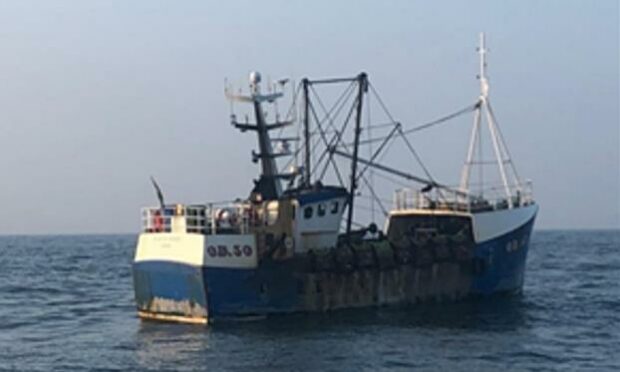A marine conservation charity has blasted the “derisory” fine handed out to a trawler skipper who destroyed a fragile seabed off the north west coast of Scotland while illegally dredging for scallops.
Alex Murray, of Lewis, was penalised £3,211, including a £175 victim surcharge, for fishing in the Wester Ross marine protected area (MPA) near Ullapool.
It is thought to be only the second case of its kind since MPAs were introduced by the Scottish Government in recent years.
The 56-year-old was in charge of the FV Star of Annan, which was found to have breached a ban on shellfish dredging in July 2019.
Dredge fishing involves towing metal nets over the seabed to flip scallops, also known as clams, out of the sand.
Murray denied the allegation but was found guilty after a three day trial at Stornoway Sheriff Court earlier this month.
At the same court yesterday Sheriff Gordon Lamont was told Murray benefitted by £1,036 from the illegal shellfish catch after deductions for the owner and crew wages.
The sheriff said the fine was based on the level of environmental damage, his share of the catch and his financial circumstances.
‘This fine sends an outrageous message’
But marine charity Open Seas slammed the “disrespectfully small” penalty.
The sustainable fisheries campaign group said the “derisory” fine fails to convey the gravity of the crime.
Nick Underwood, spokesman for the organisation, said: “This fine sends an outrageous message that it pays to fish illegally and damage the environment, because the small criminal penalty is worth the risk.
“This disrespectfully small fine does not reflect the seriousness of inflicting criminal damage to our natural heritage and will not deter illegal fishing in the future.
“In England, authorities can issue unlimited fines at levels set in relation to the turn-over of the company, while here in Scotland fines issued for criminal damage to marine protected areas are just a few thousand pounds, less than the value of a good day’s catch.”
He added: “Dredging inside a protected area has not just illegally enriched a criminal fishing business, it has damaged the interests of other law-abiding fishermen and society at large.
“Maerl habitat is a nursery for marine life, including scallops.
“By illegally towing heavy scallop dredges through this fragile habitat, the scallop dredge industry is literally biting the hand that feeds it, as well as degrading a centuries-old resource relied upon by other fishermen.”
It looked like ‘a motorway on the seabed’
Delivering sentence, Sheriff Lamont said: “This type of fishing goes completely against the marine conservation order and (the seabed) will take some time to recover.”
The primary purpose of the legal protection is “preservation of the seabed and marine life.”
He highlighted testimony from a diver at the trial who said the affected area looked like a “motorway on the seabed” when he explored underwater six days after the incident.
The boat’s hydraulic problems ruled out any fishing activity as the winches are connected to the dredging gear, Murray told the trial two weeks ago.
They faced a “dangerous situation” as the wires behind the boat risked getting entangled and had to navigate at slow speed to stop the vessel rolling in the sea swell and weather conditions, he told the court
Defence advocate Rosalyn McTaggart highlighted to the trial the boat’s speed was “consistent with making repairs and marking wires” as it struggled with machinery faults and the effects of the swell.












